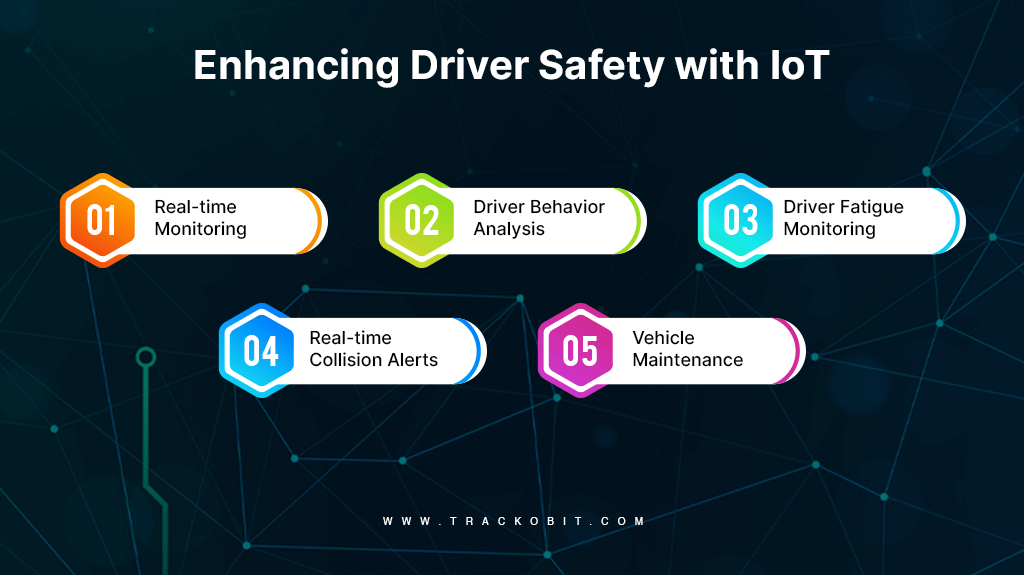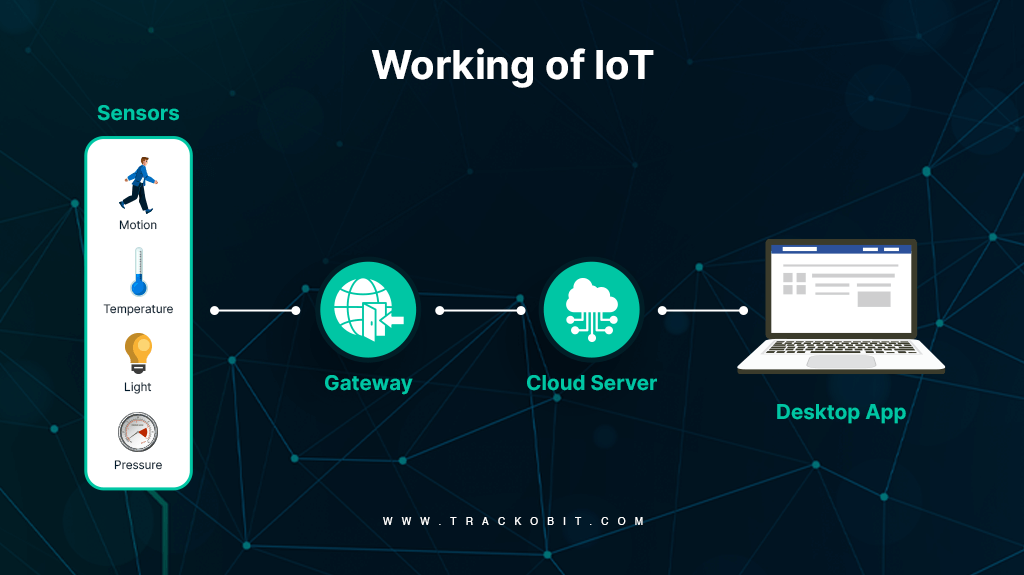-
TrackoBit
Manage commercial vehicles with the new-age Fleet Management Software
TrackoBit -
TrackoField
Streamline your scattered workforce with Field Force Management Software
TrackoField -
Features Resources
-
Blog
Carefully curated articles to update you on industrial trends. -
White Paper
Insightful papers and analysis on essential subject matters. -
Glossary
Explore an alphabetical list of relevant industry terms. -
What’s New
Get TrackoBit & TrackoField monthly updates here. -
Case Study
Explore the cases we solved with our diverse solutions. -
Comparisons
Compare platforms, features, and pricing to find your best fit.
-
About Us
Get to know TrackoBit: our team, ethos, values, and vision. -
Careers
Join the most dynamic cult of coders, creatives and changemakers. -
Tech Support
Learn about our technical support team and services in detail. -
Events
Check out the exhibitions where we left our marks and conquered. -
Contact Us
Connect with us and let us know how we can be of service.
How Does IoT Vehicle Tracking Systems Improve Driver Safety?
- Author:Anvesha Pandey
- Read Time:6 min
- Published:
- Last Update: March 29, 2024
Table of Contents
ToggleCurious to know about the world of IoT and how this technology is safeguarding your drivers? If yes, this piece is you. Explore how IoT has amped up the level of driver safety.
Table of Contents
Toggle
Think of a scenario, where you have to make an urgent delivery. And your driver is rushing to meet deadlines, putting harsh acceleration to zip fast and slamming in the brakes to avoid sudden bumps. This harsh maneuver not only puts themselves and others at risk. But also sends shivers down the fleet manager’s spine, worried about potential accidents, vehicle damage, and rising insurance costs.
But what if we tell you there is a technology that can be an absolute game changer in safeguarding your mobile resources? A technology that goes beyond just pinpointing locations? Well, we’re talking about an IoT Vehicle tracking system that offers real-time tracking into driving behavior and crucial insights to manage the fleet with safety, precision, and efficiency.
Let’s cut to the chase and learn how IoT-powered vehicle tracking systems are enhancing drivers’ safety.
Let’s get into the world of IoT!
What is IoT?
IoT stands for the Internet of Things. It refers to a vast network of physical devices that are equipped with sensors, software, and other technologies. The IoT concept involves extending Internet connectivity beyond traditional devices like computers, smartphones, and tablets to a diverse range of devices and everyday things.
In simple words, IoT is the system of interrelated devices connected to the internet to transfer and receive data from one to another.
Let’s understand the concept of IoT with a more relatable and everyday use case. You must be aware of the Smart home concept, right? Of course, you are. – You light up the living room lamp from the kitchen – You turn on the AC 5 minutes before you step in the house – You respond to the doorbell from your bedroom itself. How do you think, all of this is possible? The IoT ecosystem.
How IoT Helps in GPS Tracking?
GPS systems provide the foundation for locational tracking but IoT acts as the nervous system, supercharging its capabilities. IoT vehicle tracking involves using Internet-connected devices—gateways, modules, and GPS/GNSS or other location tracking technologies—which help track the location, performance, and condition of mobile assets, vehicles, and equipment.
Now Let’s Understand What IoT Vehicle Tracking System is:
IoT vehicle tracking systems are super smart systems that help to keep track of your vehicles’ and ensure their safety on the road. The system utilizes a combination of technologies to provide real-time insights and locational data. All-in-all this transforms fleet management practices. The basic components of IoT vehicle tracking are Sensors, GPS Devices, Data Analytics, and fleet management.
5 Ways How IoT Helps in Enhancing Driver Safety

Drivers are your most valuable asset and their safety will surely be a prime concern. The Internet of Things (IoT) vehicle tracking systems offer an array of features that directly contribute to improving driver safety.
1. Real-time Monitoring
The real-time monitoring of your drivers is the primary benefit of the IoT. The sensors installed in vehicles can continuously monitor various parameters such as speed, acceleration, braking, and location. This real-time data can be analyzed to detect any abnormal or unsafe behavior and risky driving patterns. This further helps in allowing timely interventions or alerts to prevent accidents.
2. Driver Behavior Analysis
With the help of IoT systems, you can track how your drivers drive. IoT devices like sensors and cameras installed in the vehicle help you collect data on various aspects related to driving behavior like harsh braking, harsh cornering, red light jumping, and more.
This further helps in evaluating overall driver performance and providing them with training accordingly.
3. Driver Fatigue Monitoring
IoT devices incorporate technologies such as facial recognition or steering wheel sensors to detect signs of driver fatigue or drowsiness. Real-time alerts can be generated to warn drivers when they show signs of fatigue. This further helps in reducing the risk of accidents by drowsy drivers.
4. Vehicle Maintenance
IoT vehicle tracking system helps in vehicle maintenance as IoT-enabled sensors monitor the health and performance of various vehicle components in real time, including engine systems, brakes, tires, and more. With the continuous monitoring of these parameters and detecting any anomalies or signs of potential failure.
IoT systems can facilitate proactive maintenance scheduling, reducing the chances of unexpected breakdowns or malfunctions that can compromise safety on the road.
5. Real-time Collision Alerts
With the use of advanced sensors such as cameras, radar, and LiDAR, IoT systems can detect potential collision risks in real time. By analyzing the relative positions and movements of nearby vehicles, pedestrians, and obstacles, these systems can issue alerts to drivers or even autonomously trigger emergency braking or steering maneuvers to avoid collisions.
| 🔎Fact Time- According to research, by 2024, globally, there will be 80 billion IoT connectivity. The worldwide IoT fleet management market is expected to increase at a CAGR of 21.0% from $6955.7 million in 2020 to $26410 million by 2027. |
Working of IoT
The internet used to help people connect, but now even objects can talk to each other! Isn’t that cool? And don’t worry, understanding how they do it isn’t as hard as rocket science. Let’s look at the working of IoT.
The operation of an IoT vehicle tracking system begins with the sensors and GPS devices collecting data from the vehicle. This data is then transmitted via connectivity technology to a central telematics platform. Here, the data is processed and analyzed, turning raw data into actionable insights. Fleet managers can access these insights through a dashboard, which provides an overview of fleet operations and highlights any safety concerns that need immediate attention.

Challenges of IoT
Although this technology offers an array of benefits, it still presents some challenges.
Lack of encryption
IoT faces huge security challenges, especially a lack of encryption. Without proper encryption protocols, data transmitted through IoT devices are vulnerable to interception and use by malicious actors. This flaw exposes sensitive information, compromises user privacy, and undermines the integrity of IoT systems, posing serious risks to individuals and organizations.
Scalability and compatibility
As the IoT vehicle tracking network grows, ensuring compatibility and seamless integration among different devices, protocols, and software solutions becomes a bit of a difficult task. Scalability and interoperability are important for easy deployment and management.
Privacy concerns
Privacy concerns encompass issues surrounding the gathering, retention, utilization, and dissemination of personal data. These concerns may involve questions about the individuals who can access personal information, how it is utilized, and whether it is safeguarded against unauthorized access or misuse.
In today’s digital era, privacy concerns have gained heightened significance due to the massive collection and storage of personal data. To tackle privacy concerns effectively, both individuals and organizations must enforce suitable security measures to safeguard personal information, maintain transparency regarding its usage, and uphold individuals’ rights to manage their information.
Final Words
Finally, we are at the end of wrapping up this informational piece which delved into the world of IoT. Vehicle tracking systems when paired with advanced fleet management software result in enhanced driver safety. With various features like driver behavior analysis, real-time monitoring, and driver fatigue monitoring, these systems offer a proactive approach in adding to driver safety.
IoT has a great future in the coming times, as the role of IoT in the world of fleet management especially in terms of driver safety will always tend to grow.
Utilizing IoT vehicle tracking systems can lead to substantial progress in decreasing road accidents and guaranteeing a safer driving atmosphere for everyone.
Track Better with TrackoBit’s Vehicle Tracking Systems
Well, are you planning to get your hands on a future-proof IoT-powered GPS Tracking system? If yes, TrackoBit can be a great friend of yours in this journey. Keep a close eye on all your drivers ensuring their safety with its Video Telematics, Driver Monitoring, and Driver Behavior Monitoring Systems.
Want to know more?
Frequently Asked Questions
-
What are the benefits of IoT in vehicle management?
IoT benefits vehicle management by enabling real-time monitoring of vehicle health, location, and performance. With IoT sensors, fleet managers can optimize maintenance schedules, prevent breakdowns, and improve fuel efficiency. Remote diagnostics and predictive analytics ensure proactive maintenance, reducing downtime and operational costs while enhancing overall fleet productivity and longevity.
-
What is the role of IoT in fleet management?
Fleet management software, powered by IoT technology, streamlines operations by optimizing route planning, scheduling, and asset utilization. Real-time data from IoT sensors enables efficient vehicle tracking system, maintenance scheduling, and fuel management. Advanced analytics help identify cost-saving opportunities, enhance driver safety, and improve overall fleet performance, making fleet management software a crucial tool for maximizing efficiency and profitability in modern transportation operations.
-
How is IoT enhancing driver safety?
IoT vehicle tracking systems provide real-time insights into driver behavior and vehicle performance, facilitating safer driving practices. By monitoring factors like speed, acceleration, and location, these systems can detect risky behaviors and alert drivers or fleet managers. Additionally, IoT-enabled collision detection and emergency response features enhance driver safety by minimizing the risk of accidents and improving emergency response times.
Anvesha is a communication specialist at TrackoBit. With a strong background in media and communications, she adds much-needed balance and brevity to TrackoBit’s... Read More
Related Blogs
-

When Tracking Needs a Clock: Rethinking Fleet Visibility
Tithi Agarwal December 24, 2025Read on to understand why fleet tracking works better when it follows working hours. Because visibility should support operations, not…
-

What Makes TrackoBit’s Video Telematics Software Truly Next-Gen?
Shemanti Ghosh December 17, 2025TrackoBit’s video telematics software blends smart video intelligence with full server control. The result? Superior fleet reliability and safety.
-

Plug, Pair, Perform TrackoBit Introduces BLE Sensor Integration
Tithi Agarwal November 26, 2025TrackoBit’s BLE Sensor Integration enables wireless, real-time monitoring with faster installs and accurate insights. It improves fleet efficiency, visibility, and…
-

How to Use Driver Behavior Reports as a Sales Hook to Close Big Fleets
Tithi Agarwal October 16, 2025TrackoBit’s driver behavior reports empower fleet providers to win big contracts by showcasing safety, efficiency, and measurable ROI.

Subscribe for weekly tips to optimize your fleet’s potential!
Your inbox awaits a welcome email. Stay tuned for the latest blog updates & expert insights.
"While you're here, dive into some more reads or grab quick bites from our social platforms!"Stay Updated on tech, telematics and mobility. Don't miss out on the latest in the industry.
We use cookies to enhance and personalize your browsing experience. By continuing to use our website, you agree to our Privacy Policy.

































